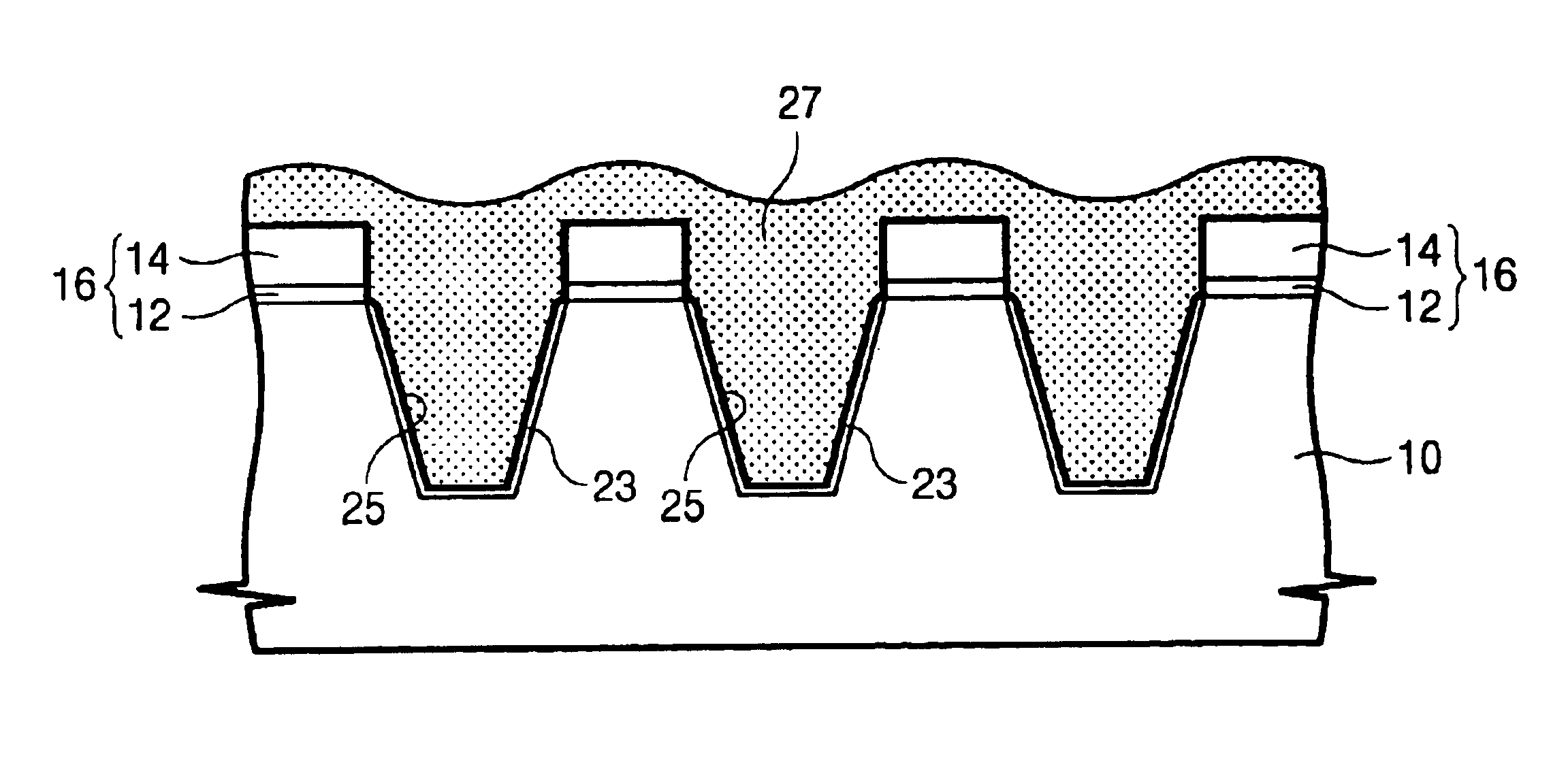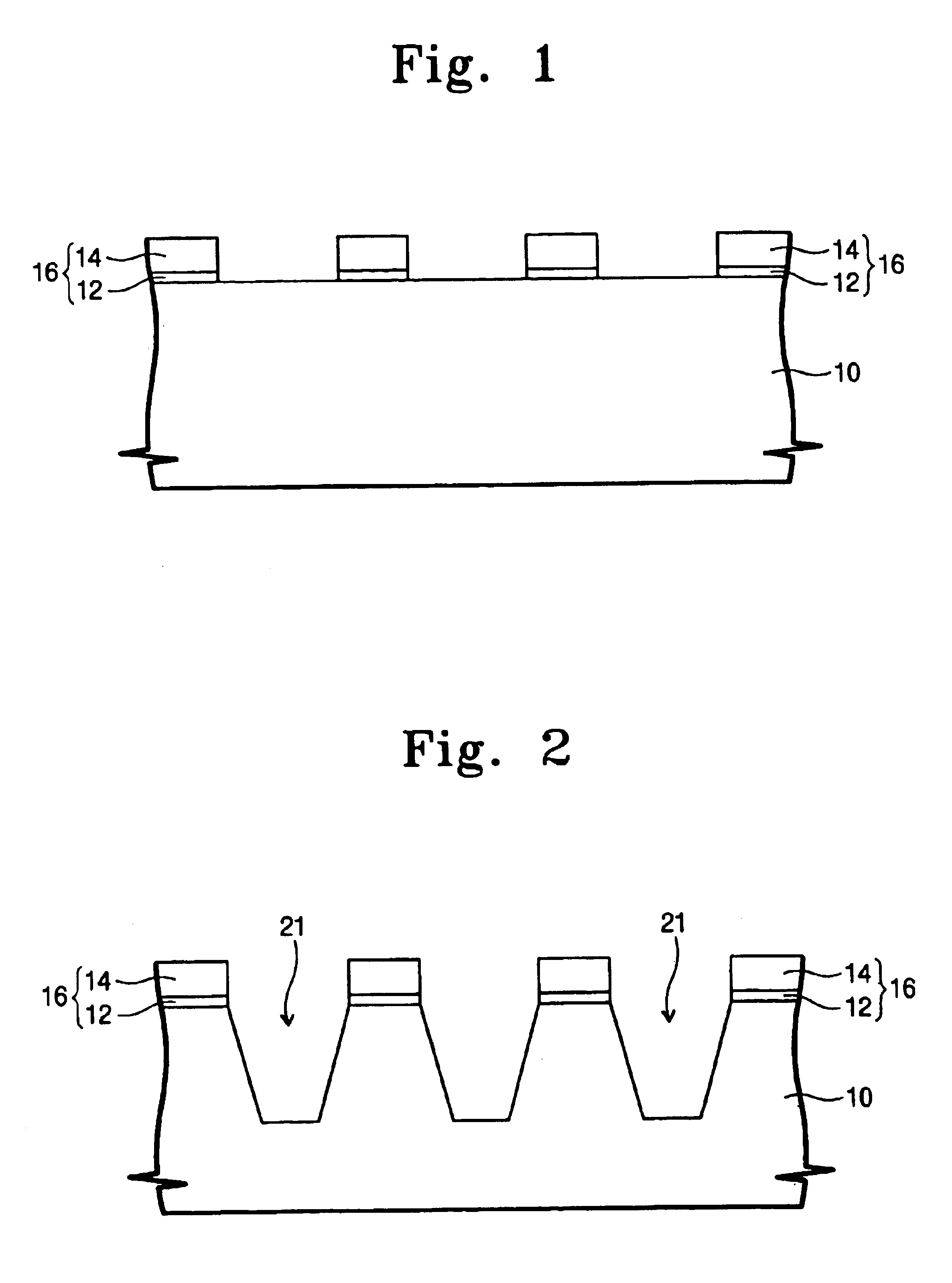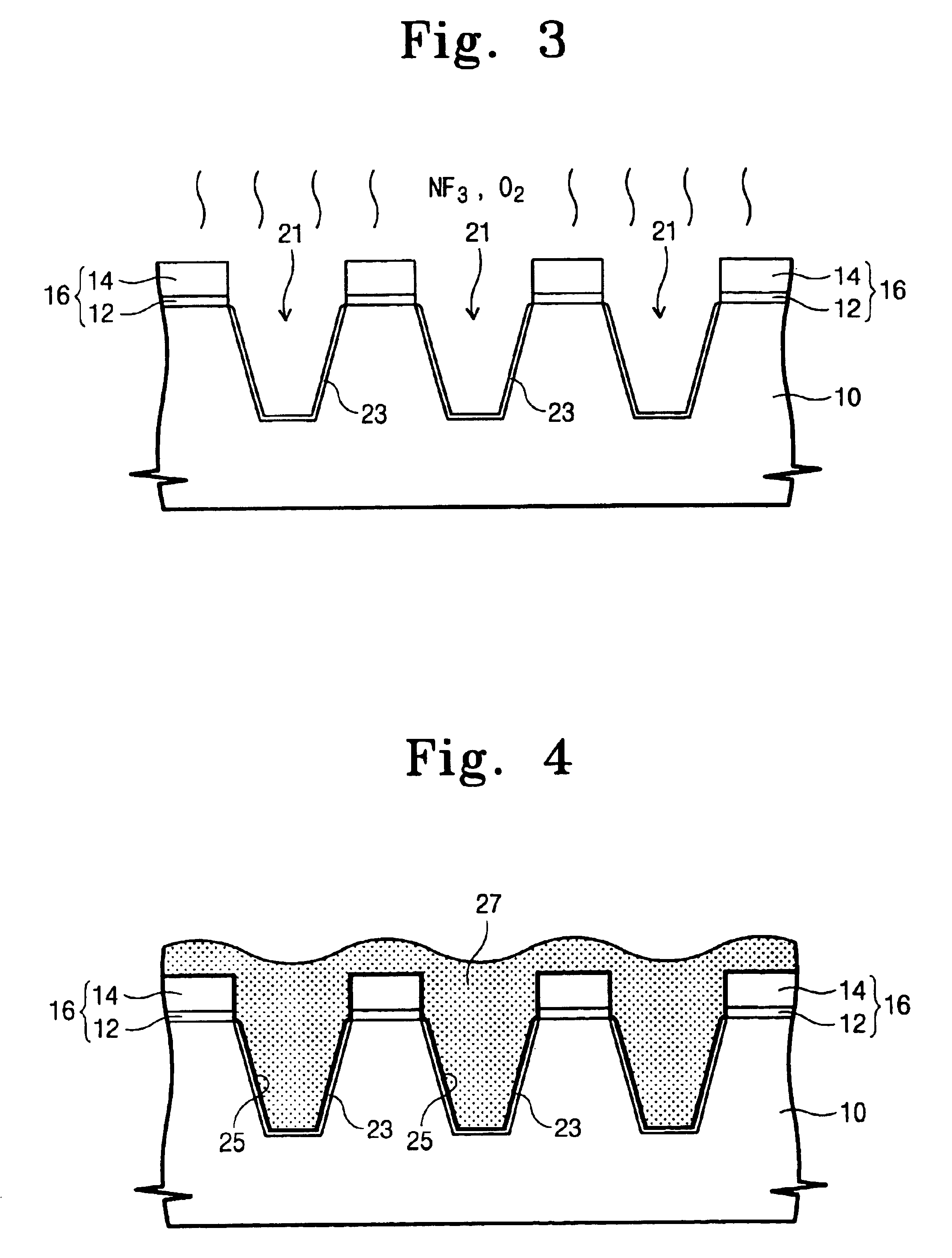Method and device for forming an STI type isolation in a semiconductor device
a semiconductor device and trench isolation technology, applied in semiconductor/solid-state device manufacturing, basic electric elements, electric devices, etc., can solve the problems of isolation regions, narrow silicon substrates, and reduced device operation efficiency, and achieve enhanced device characteristics and leakage current during device operation.
- Summary
- Abstract
- Description
- Claims
- Application Information
AI Technical Summary
Benefits of technology
Problems solved by technology
Method used
Image
Examples
embodiment 1
FIG. 1-FIG. 5 show cross-sectional views of a semiconductor device setting forth stages in a manufacturing process for forming a trench isolation in accordance with an embodiment of the present invention. FIG. 1 shows a trench etching mask (16) which is made of a pad oxide layer (12) and silicon nitride layer (14) on a silicon substrate (10). Specifically, the pad oxide layer (12) is formed on the silicon substrate (10) and the silicon nitride layer (14), which acts as an etching prevention or barrier layer, is deposited by CVD. A photoresist pattern for a trench is formed by a photolithography process. The silicon nitride layer (14) and pad oxide layer (12) are etched through and the photoresist pattern is removed, thereby forming the trench etching mask (16).
FIG. 2 shows an etching of a silicon substrate (10) using the trench etching mask (16) thereby forming a trench (21) in the silicon substrate. Preferably, etching the silicon substrate is accomplished by an anisotropic etch, a...
embodiment 2
The process of embodiment 2 is similar to that of embodiment 1, with the exception of the method of supplying fluorine gas. Unlike embodiment 1, fluorine gas is not supplied to the interface between the trench device isolation layer (29) and the substrate (10) during thermal oxidation of the trench sidewall. In embodiment 2, the simultaneous processes shown in FIG. 3 of embodiment 1, including both thermal oxidation and supplication of fluorine gas or NF3 containing fluorine, are divided into two steps, as shown in FIG. 6 and FIG. 7.
Referring to FIG. 6, the substrate (10) where the trench (21) is formed is thermally oxidized in a furnace to form silicon thermal oxide without fluorine. In other words, a sidewall thermal oxide layer (23′) is formed inside the trench (21).
Referring to FIG. 6 and FIG. 7, the sidewall thermal oxide layer (23′) on the sidewall inside the trench is annealed in a process which additionally supplies a fluorine containing gas, such as NF3 gas. Fluorine, disso...
PUM
 Login to View More
Login to View More Abstract
Description
Claims
Application Information
 Login to View More
Login to View More - R&D
- Intellectual Property
- Life Sciences
- Materials
- Tech Scout
- Unparalleled Data Quality
- Higher Quality Content
- 60% Fewer Hallucinations
Browse by: Latest US Patents, China's latest patents, Technical Efficacy Thesaurus, Application Domain, Technology Topic, Popular Technical Reports.
© 2025 PatSnap. All rights reserved.Legal|Privacy policy|Modern Slavery Act Transparency Statement|Sitemap|About US| Contact US: help@patsnap.com



